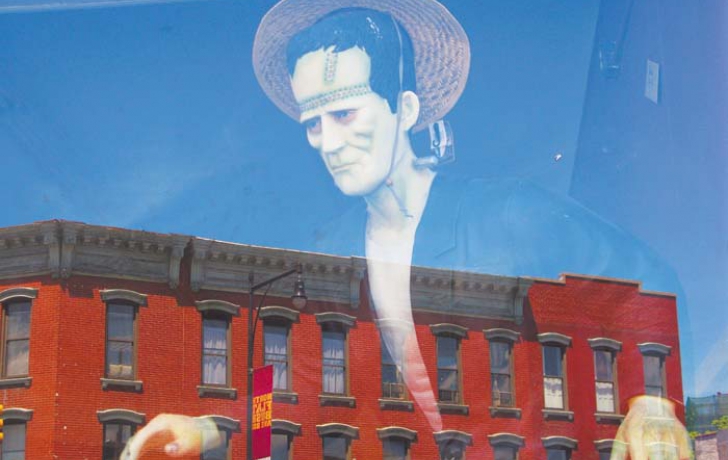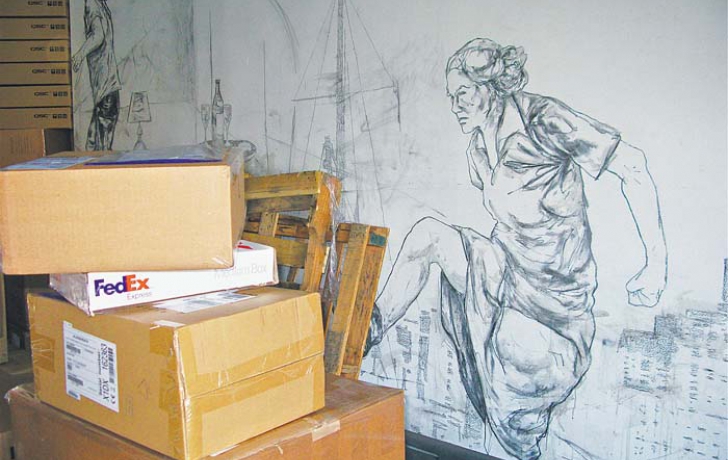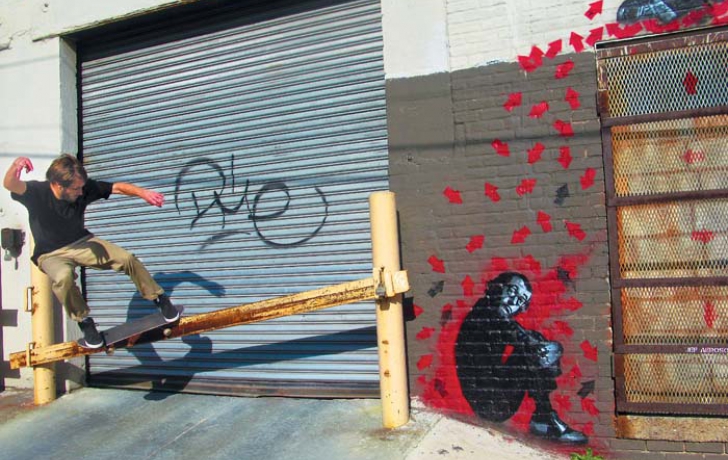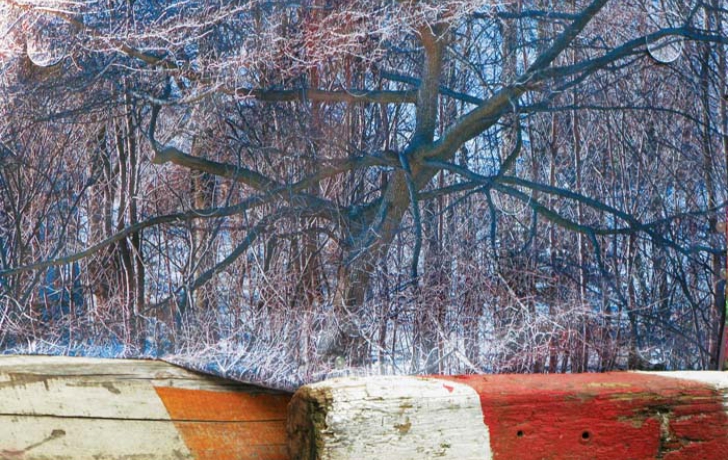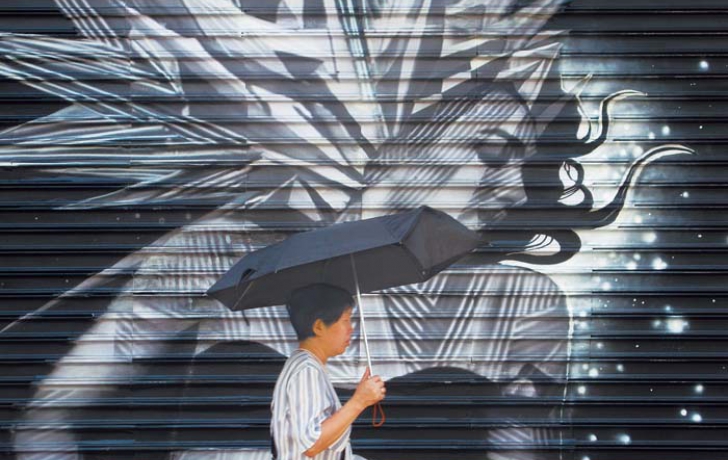Hungry Eyes: Tribeca Artist Ken Brown Seeks Out Visual Quirks in the City
Riding his bike down a Bushwick backstreet, Ken Brown stopped beside a half-block-long stretch of wall, masterfully covered with graffiti. First he photographed a colorful slice of pizza riding a bicycle, then leaned in close to document just one small detail, a rabbit.
“I’ve always found rabbit images kind of fun,” he said, taking a few more snaps. “I have a whole file on animals in street art.”
Animals, old storefronts, hand-painted signs, words on walls, stenciled graffiti, tourists photographing tourists in front of graffiti. These are just a few of the 40 files of street photos into which are digitally tucked more than 60,000 pictures.
They are the products of years of nearly daily forays by bike into the farthest reaches of the city.
“I have hungry eyes,” he said. “They like to be fed.”
Most often his pictures incorporate the fleeting treasures of street art, or the fast-disappearing graphics of hand-painted signs, or some odd juxtaposition of person and graphic. “I see myself as artist and archivist,” he said. “I wear both hats.”
“When I record it,” he added, “I’m hoping in some way to further its life and celebrate it. What I really do is celebrate the visual vitality of New York City.”
Brown, 68, calls himself a “filmmaker/photographer/cartoonist/designer,” which only partially describes the eclectic scope of his creative life.
In the early 1970s, he was a filmmaker and film teacher in Boston who also liked to draw. He began selling his cartoon graphics on postcards in 1975 and they were a hit. Then he expanded: coffee mugs, T-shirts, rubber stamps, calendars, temporary tattoos, refrigerator magnets, hats were all sold bearing his creations.
With success came the purchase in 1985 of a fourth-floor former cheese warehouse on Harrison Street, where he moved with his wife, the animator Lisa Crafts.
“Lisa once described my business as a lemonade stand that got out of control,” he said with pride.
The loft is a testament to the kind of visual delight that sparked his success as a maker of pop fun. No surface is lacking kitschy ephemera, mostly small figures from the 1940s, ’50s and ’60s: Humpty Dumpties and sumo wrestlers, anthropomorphic salt and pepper shakers and miniature Shriners.
“My daughter, Jemma, used to be embarrassed by my bunny collection,” he said.
Showing a visitor around the loft, Brown paused at a collection of vintage Christmas figurines.
“These are plastic snowmen and Santa Clauses that I actually could justify because I used them for wrapping paper designs.” Some of the “oddabilia,” as Brown calls it, also had starring roles on “Sesame Street” during the 12 years that he and crafts created animated segments for the show.
While the cultural and commercial changes brought by the Internet slowed the demand for his quirky style of graphics, it did nothing to diminish his output of visual surprises.
Seven years ago, with more time on his hands and “just to keep the synapses snapping,” he began creating a political cartoon, a collage or other graphic that he emailed them to family and friends.
Over time Brown turned to photography, and for the past three years he’s been “publishing” his weekly “PixPop” photos to an email list that has grown to nearly a thousand.
Each week he culls 300 to 400 images from recent bike trips to Williamsburg or Harlem or Coney Island—anywhere that could yield the assorted riches of street art that he is committed to preserving.
“The not so nice part of street art is that it’s ephemeral,” he said. “And the nice part is that it changes all the time.”
Even along the familiar paths of Bushwick recently, there were freshly painted possibilities that kept the artist excited anew.
“I see some stuff I haven’t seen before,” he announced suddenly. “I think I’ll take a left here.” Brown stopped his bike in front of the graffitied aluminum facade of a warehouse and aimed his camera at a stubbly cartoon face, its pupilless eyes staring back at him.
“I have a file of about 1,500 heads,” he said gleefully. “I have to get this!”
See more from Ken Brown at kenbrownpixpop.blogspot.com.



